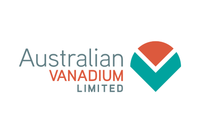Vanadium is a key component in steel, but it has other emerging applications as well. Learn about vanadium mining and the deposits this industrial metal comes from.
Investors interested in vanadium mining should have an understanding of the places this industrial metal is found and the main deposit types it comes from.
World resources of vanadium currently exceed 63 million tons, according to the latest data from the US Geological Survey, with the top producers being China, Russia and South Africa. China came in well ahead of the pack in 2017 with output of 43,000 MT.
Some may be surprised to learn that vanadium is a trace element — that means it is widely distributed in nature, with its average abundance in the continental crust coming in at about 60 parts per million. As a result, vanadium is usually produced as a by-product or co-product of other materials.
The materials vanadium is found alongside vary widely. The metal can be found in deposits of phosphate rock, titaniferous magnetite and uraniferous sandstone and siltstone, where it makes up less than 2 percent of the host rock. Vanadium can also be found in bauxite and carboniferous materials like coal, crude oil, oil shale and tar sands.
All in all, because it of its wide distribution, world resources of vanadium “are understated and therefore not fully indicative of available supply,” the US Geological Survey says.
That said, there are four main types of mineral deposits where vanadium is present in economic concentrations: vanadiferous titanomagnetite (VTM) deposits, sandstone-hosted vanadium deposits, shale-hosted vanadium deposits and vanadate deposits. Read on for an overview of these four deposits.
1. Vanadium mining: VTM deposits
VTM deposits are found worldwide, and are the main source of vanadium, according to the US Geological Survey. The most economically significant VTM deposits are located in: South Africa’s Bushveld Complex; China’s Panzhihua layered intrusion; the Russia-based Kachkanar massif; Western Australia’s Windimurra Complex; and the Bell River and Lac Dore complexes, both in Quebec.
These vanadium deposits are hosted mainly within mafic and ultramafic igneous rocks, and are made up of magmatic accumulations of magnetite and ilmenite. For the most part they contain 0.2 to 1 percent V2O5, but some areas have over 1.5 percent V2O5. Areas like that include the Bushveld Complex.
The US Geological Survey pegs the Speewah deposit in Western Australia as the largest example of a VTM deposit. Owner King River Copper (ASX:KRC) says Speewah is one of the world’s largest undeveloped titanium-vanadium in magnetite deposits, with a measured resource of 322 million tonnes at 0.32 percent V2O5 and 2 percent titanium, and an indicated resource of 1,054 million tonnes at 0.33 percent V2O5 and 2 percent titanium.
2. Vanadium mining: Sandstone-hosted vanadium deposits
As mentioned, vanadium is often produced as a by-product or co-product of other materials. One of those materials is uranium — the US Geological Survey notes that sandstone-hosted uranium deposits are found across the globe, with many having enrichments of vanadium.
Vanadium concentrations in sandstone-hosted vanadium (SSV) deposits generally stand at 1 percent V2O5 or higher, although some deposits have grades of over 2.5 percent V2O5. SSV deposits tend to be the highest-grade vanadium deposits, but most are small (less than 1 million MT of ore).
In the US, SSV deposits are the main source of vanadium, with deposits located on the Colorado Plateau being key. US-based SSV deposits can also be found in Eastern Utah, as well as Northern Arizona and New Mexico. Other SSV deposits globally include: the Bigrlyi deposit in Australia; deposits in the Tonco-Amblyo district in Argentina; and a deposit in the Karamurun district of Kazakhstan.
3. Vanadium mining: Shale-hosted vanadium deposits
Vanadium-rich metalliferous black shales are found mainly in late Proterozoic and Phanerozoic marine successions. Concentrations in these vanadiferous black shales regularly exceed 0.18 percent V2O5, and can be as high as 1.7 percent V2O5.
The US Geological Survey says that “well-characterized” vanadiferous black shales include: the Nevada-based Woodruff Formation; the Doushantuo Formation in China’s Hubei province; and portions of the Toolebuc Formation in Queensland, Australia.
However, the publication points out that while black shales “have long been recognized as potential sources of vanadium, they are not currently exploited.” It notes that development is underway at Prophecy Development’s (TSX:PCY) Gibellini vanadium prospect in the Woodruff Formation, and it will be the first primary shale-hosted producer of vanadium in the US if it moves into production.
4. Vanadium mining: Vanadate deposits
The copper–lead–zinc vanadate ores in Northern Namibia were once considered among the largest vanadium deposits in the world, says the US Geological Survey, and other areas with vanadate deposits include Angola, South Africa, Zambia and Zimbabwe. However, vanadate deposits largely stopped supplying vanadium in 1978, when Berg Aukas, the last producing mine in Northern Namibia, closed.
Smaller deposits occur in places such as Mexico, Argentina and the US, but they “are unlikely to ever be economically significant resources.”
Vanadium mining: Other deposit types
The four deposit types listed above represent the main deposits where vanadium can be found (or was found previously) in economic concentrations. However, the US Geological Survey also outlines a couple of other deposit varieties where vanadium is present. Those include:
- Other magmatic-hydrothermal vanadium resources — Some magmatic-hydrothermal niobium-titanium deposits contain elevated concentrations of vanadium, the publication says. Additionally, heavy mineral concentrate samples from iron ores in Sweden and Chile have reported high concentrations of vanadium, while some gold-quartz veins contain roscoelite and other vanadium-bearing minerals.
- Fossil fuels — Vanadium correlates closely with organic carbon, and is enriched in many oil shales. For that reason, “minor amounts” of the metal are produced as a by-product of coal and tar sands.
Now that you know more about where vanadium mining happens, which deposits do you think have the most potential? Tell us in the comments.
This is an updated version of an article originally published by the Investing News Network in 2010.
Don’t forget to follow us @INN_Resource for real-time news updates!
Securities Disclosure: I, Amanda Kay, hold no direct investment interest in any company mentioned in this article.

